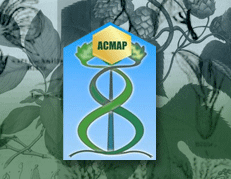Home > JMAP > Vol. 3 > Vol 3 Issues 1-4
Chemotyping and Determination of Antimicrobial, Insecticidal, and Cytotoxic Properties of Wild-Grown Cannabis sativa from Nepal
Abstract
Cannabis sativa was collected from a wildgrowing population in Biratnagar, Nepal. The essential oil was obtained by hydrodistillation and analyzed by gas chromatography – mass spectrometry. A total of 107 constituents were identified in the oil accounting for 94.2% of the composition. This Nepalese chemotype is characterized by a predominance of sesquiterpenoids (68.1%) dominated by (E)-caryophyllene (20.4%), α-humulene (7.0%), and α-bisabolol (5.8%), but a paucity of monoterpene hydrocarbons (0.9%). In particular, neither myrcene nor terpinolene were detected. The oil in the Nepalese Cannabis plants did contain small amounts of cannabidiol (1.6%), cannabichromene (0.2%) and Δ9-tetrahydrocannabinol (0.4%). The essential oil from Nepalese Cannabis sativa was screened for antimicrobial, cytotoxic, larvicidal, and insecticidal activity, and it appears as though C. sativa is relatively non-toxic.
Recommended Citation
Satyal, Prabodh and William N. Setzer.
2014.
"Chemotyping and Determination of Antimicrobial, Insecticidal, and Cytotoxic Properties of Wild-Grown Cannabis sativa from Nepal."
Journal of Medicinally Active Plants
3,
(1):9-16.
DOI: https://doi.org/10.7275/R58W3B8V
https://scholarworks.umass.edu/jmap/vol3/iss1/3
